Hey, we get it, you would like proven grow lights that help you grow your farm and make a positive environmental impact. That's why we designed the Nurser 3 Product family for you.
It is completely optimized for indoor farms and racking systems. It is designed after analysing the light effect that consistently produces high yield out of the 65,000 lighting combinations from Nurser 1 and Nurser 2. These lights are easy to operate, comfortable on the eyes and have an affordable pricing point to help you and grow your business.
Grow your own food and plants
-
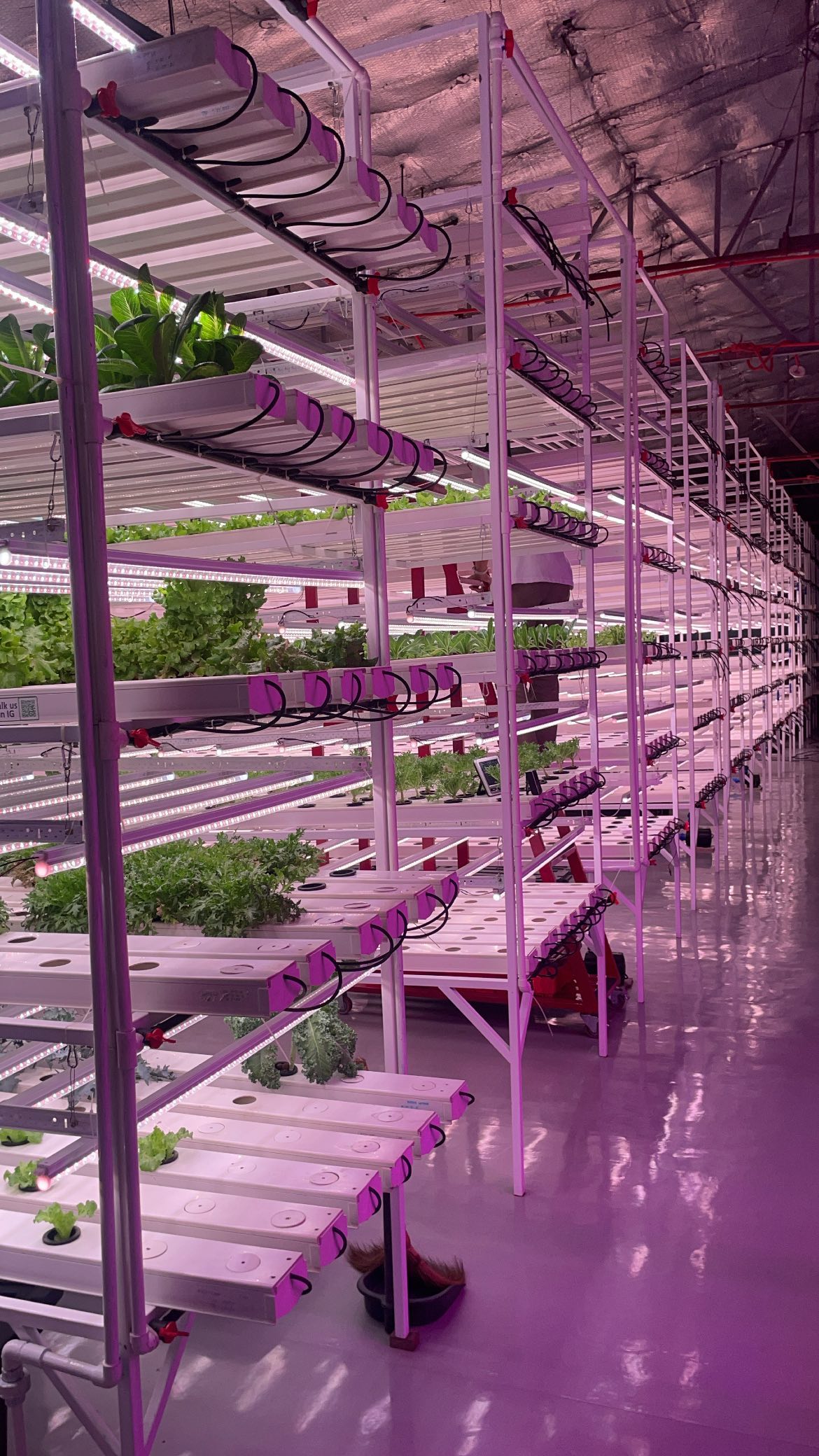
Grow Leafy greens indoor
You can easily grow leafy greens indoor such as Kale, Romaine, Chard, Basil and more. All you need is a basement, garage, empty bedroom or warehouse to install you grow racks.
The lights contain the right light for plants to grow well. It will also help people to see the plants and avoid dry eyes as compared to 'purple' lights.
These lights work well with crops in hydroponics, flood tables, rafts, organic (soil-based) installations and more.
Photo: @eaturbangreens -
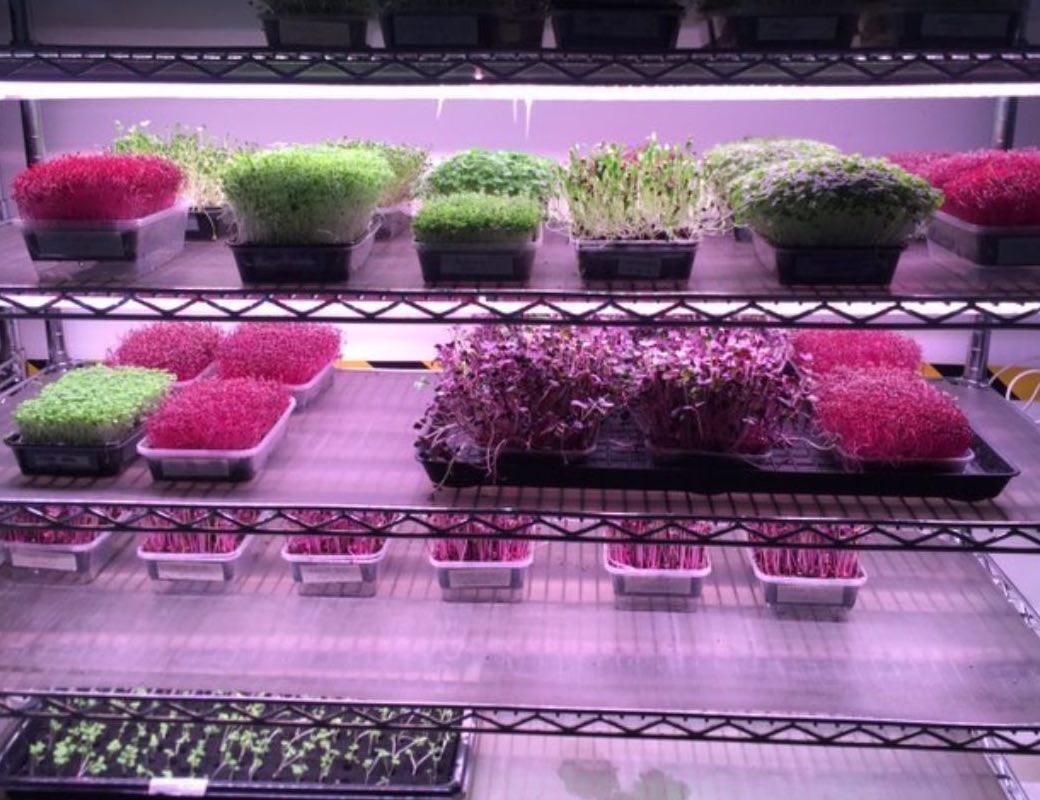
Grow Microgreens on a rack
If you like eating cress, you'll know they are best consumed fresh.
These lights help you harvest in around 7 days and give your micro-greens a rich saturated look and nutritional yet delicious taste.
Ideal to grow in a shelf or rack. For example IKEA OMAR or other easily available racks.
Photo: @eaturbangreens -
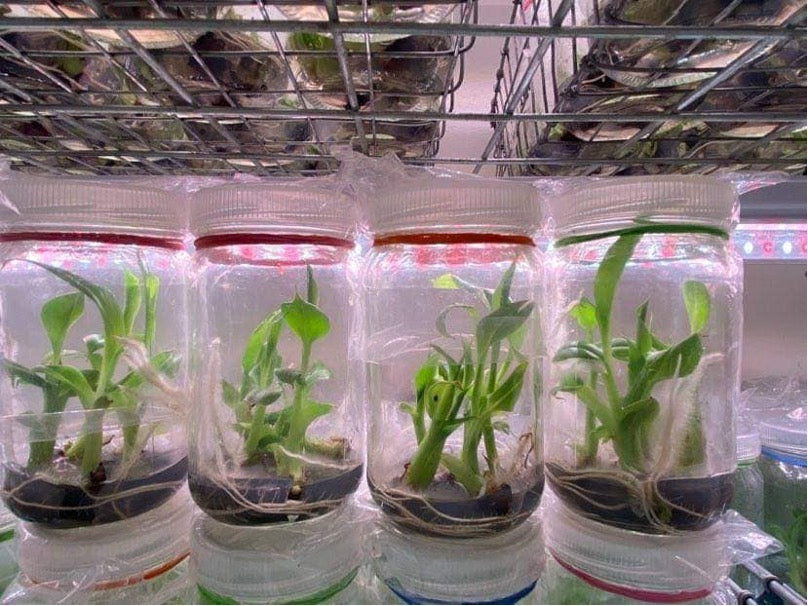
Grow Tissue culture in a Lab
Multiplying tissue culture and rooting tissue culture becomes easier and more consistent with these lights.
For guidelines around light intensity contact us.
Ideal for banana, dendrobium, pine-apple and other tissue culture.
Photo: House of Musa
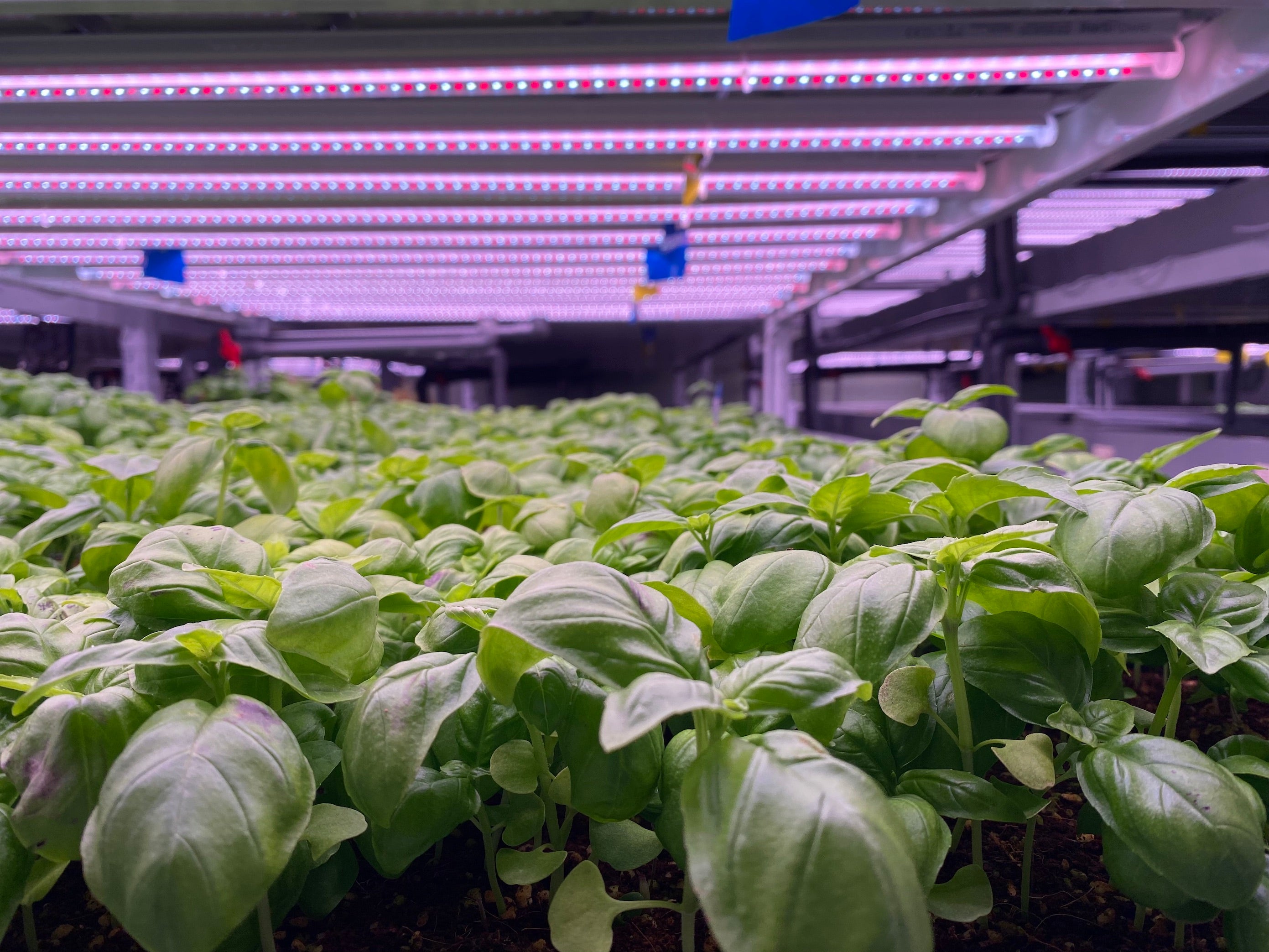
@CommonFarms
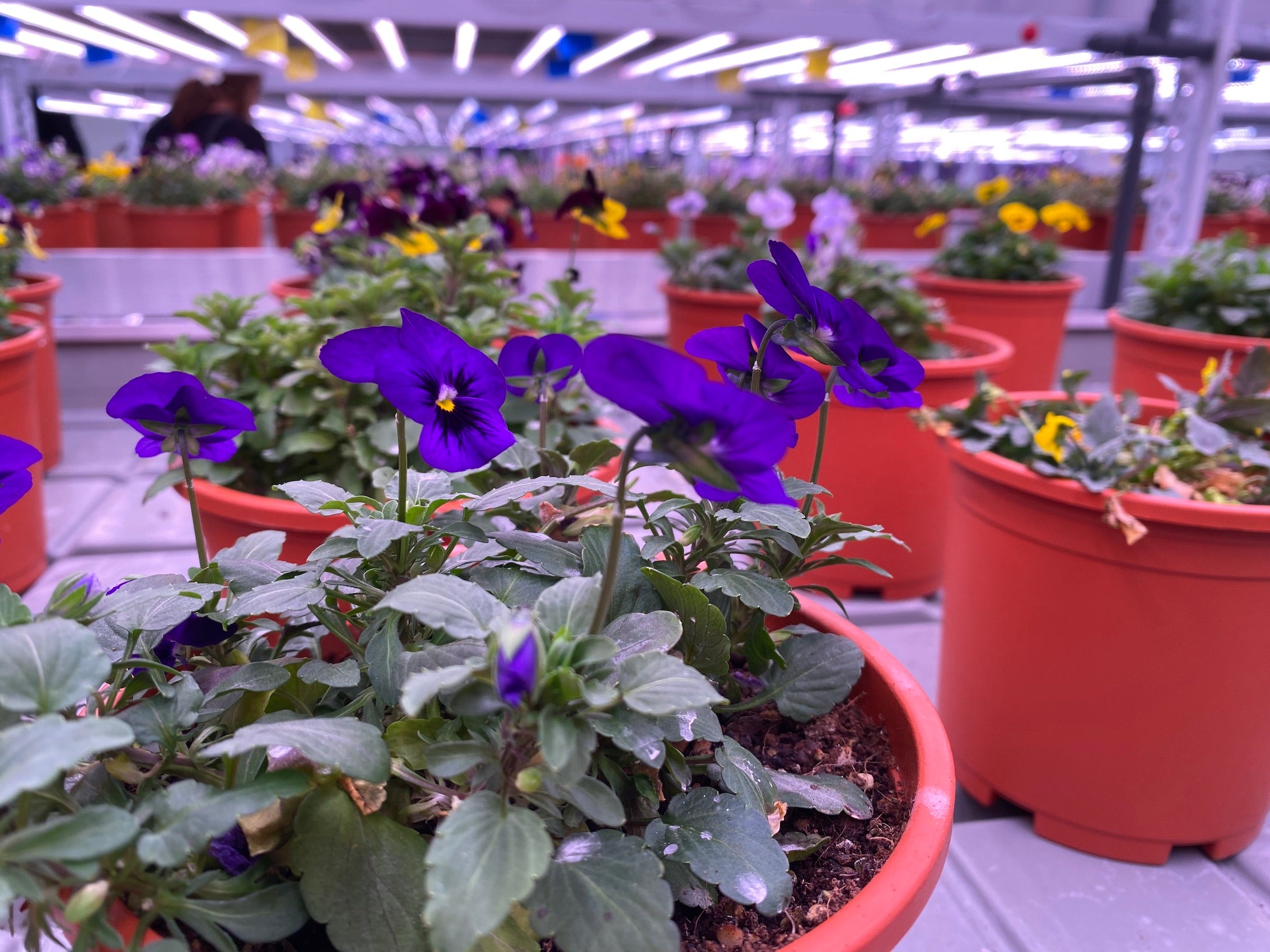
@CommonFarms
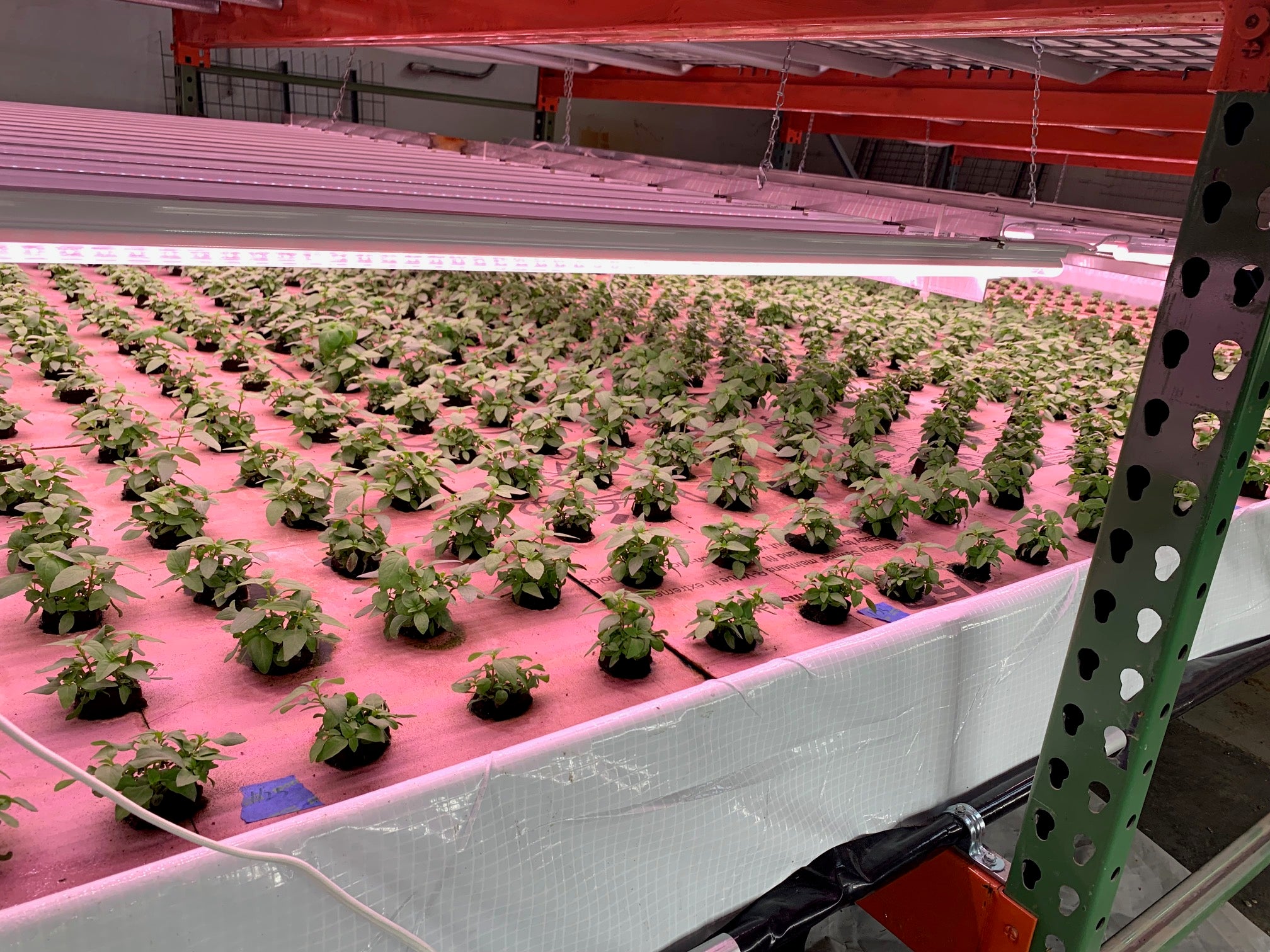
@Envista
Frequently asked questions
Logistics, Pricing, Support, Technical
Do you have stock? Leadtime?
There are samples available for immediate and priority shipment. Fedex and UPS deliver in about 10 days for USA based customers. For orders over 1000pcs the lead-time is up to 30 days.
Who will pay for the shipping cost and sales tax/ import duties?
We offer you free shipping to the USA, Canada and Europe and it includes sales tax/ import duties. The goods will be delivered at your address. Please note that a PO box is not allowed.
How many lights do I need?
Vertical farm: the lights are 1.2m long and if you're using a spacing of 10cm then you're you're using about 8 to 10 lights per 1.2 x 1.2 square (4ft x 4ft)
Microgreens: If you're growing in a rack or shelf you probably need 2 to 3 lights per L 1.2m x W 0.4m or 0.6m per level. If you have a rack of 4 levels, you'll need 8 to 12 lights.
Tissue culture: Probably 2 to 3 lights per shelf, depending on the tissue culture and width of the shelf.
Home: One set will give you 0.48sqm. of productive growing space. Add more if you need.
For more details please see the calculator below.
Are accessories included?
Yes they are included. Normally you'll get per light: one extension cable of 300mm, mounting clips, and one a main cable with switch + one main cable with switch per 15 lights, end-cap. If you like a different configuration, just let us know.
How many watt and ampere do the lights draw?
20W, 0.090Amp, and designed for 100-240VAC, 50-60Hz
What is the BTU of these growlights?
The lights are 20watt each and it translates into 68 BTUs of cooling needed in your grow area. There can be a 1 degree celsius difference in ambient temperature under the light. For a complete thermal report, contact us.
Can the lights be dimmed?
Yes, they work with LED dimmers. The lowest brightness is around 20%, depending on the LED dimmer. You might want to dim the lights if you're propagating plants from seed and then increase brightness gradually as they grow bigger. In general small plants need a lot less light compared to when they're adult plants.
Are there any pricing breaks and qty breaks?
We offer the affordable pricing for everyone. If you're placing an order over 5000pcs, we receive volume discounts from our component suppliers and we would be happy to pass them on.
Where are you located and manufacture?
Our head office is in Hong Kong and we manufacture in China. Some of our team-members work remote in the Netherlands or Singapore. We ship with Fedex international priority and can deliver to most areas in the USA and Europe within 10 working days.
Are these lights considered organic?
These lights will help you to grow organically. The lights emit the best possible light for plants based on natural daylight. Unlike fluorescent lights, they do not contain UV or mercury and help to create a safe and comfortable work environment. The lights are also designed around staff comfort and increase the color rendering vs Blue/Red/Purple lights. Purple lights can create eye fatigue and dry eyes. The lights are compliant to RoHS and Ecodesign guidelines.
Is there a free trial?
Yes, for Light as a Service contracts there is a free trial of 3 months. Depending on your project and crop you may receive 3 to 12 lights to help you get started.
Can you help me with the lighting design?
Yes we can. Email us at info@hortipower.com and let us know what you would like to grow and your space or shelf / physical dimensions. Also please tell us a bit about your goals. It helps us to design something that fits your situation. And we love to hear what you are growing!
Can I get a sample?
Businesses: yes please see our free trial as outlined above.
For consumers: there is no sample process, but please note if you're in the European Union we offer you a 30-days money-back growth guarantee.
Do you work with schools, students or universities?
Yes. Several schools use our lights to inspire the next generation of farmers, and create an awareness of sustainable food systems or conduct research.
We support(ed) projects at universities in China, Vietnam, the Netherlands and elsewhere.
Do you have different lengths available?
Yes. Nurser 3 is available in 1200mm/ 875mm/ 600mm/ 450mm. All these lights can be linked together.
I am growing leafy greens on a table, how many lights do I need?
Let's assume your table is 4ft wide. The lights are 4ft long and you can install these vertically (following the width axis).
You need around 150 μmol on the top leaf of the plants. And you will get this with a spacing of 150mm/ 6" between the lights and the distance from the light to the crop is 200mm/ 8" to 350mm/ 13.5".
If your table is e.g. 4ft by 12ft then you'll need 24 lights. (12ft is 144 inch / 6inch spacing = 24 lights)
For a table of 4ft by 8ft you'll need 16 lights.
For a table of 4ft by 4ft you'll need 8 lights.
I am growing leafy greens on a rack, how many lights do I need?
For a racking system that is 4ft long and 14" wide you'll need 2 to 3 lights per level. You can install the lights along the horizontal/ lenght-axis. If each level requires 12" height and you have a height of 48", you'll have 4 levels and it requires 8 to 12 lights for the whole rack.
What is the warranty?
3 years according to our warranty policy.
What is L70 lifetime?
L70 indicates the point in time when an LED chip is producing 70 percent of its initial light output. Often it comes with additional information such as L70B50 50.000hrs @ 25deg Celsius. This means that the light output is 70% of its original with at least 50% of the LED chips working for 50.000hrs at an ambient temperature of 25 degree celsius.
What is the color of these lights?
For the human eye these lights appear white with a soft pink tone. The CCT (or color related temperature is around 4000K. For plants it contains all colors such as blue, green, red and white with special deep red to support growth and development.
Are these grow lights safe for humans?
Yes they are for plants and humans. They do not contain harmful ultraviolet or harmful infrared.
Nurser 3 Lighting Design
Table of Contents
- What is a Lighting plan in horticulture?
- Lighting planning for a vertical farm
- Space optimization
- Use a slim fixture to maximize the number of layers
- Use a lightweight fixture
- Maximize lighting optics and reduce spill light
- Installing at the vertical or horizontal axis
- For shelves a dotless line of light
- Use the right spacing
- Use energy-efficient fixtures and design
- Reduce Heat
- Use the right spectrum for plants and people
- In general do not include UV
- Why HortiPower?
What is a Lighting plan in horticulture?
A Lighting Plan in horticulture is a proposed design and choice of lighting fixtures, and location of lighting fixtures based on the physical layout and crop needs. It includes an overview of the number of fixtures, the light effects such as intensity, uniformity, and other considerations such as electricity use and budget. It can include different variants based on different optimizations.

A good lighting plan takes the grower's goals into account, as well as crop type, growth stage and environmental conditions.
Lighting planning for a vertical farm
New farming technologies and demand for local fresh produce mean that plants can now grow indoors without sunlight. Often these facilities are climate-controlled and grow a wide range of crops. They are perfect for propagating young plants, leafy greens, herbs and fruits, and to develop and researching new varieties. Benefits of vertical farming include fresh local produce, pesticide-free crops and achieving a high yield on a small land footprint.
With our lighting- and plant expertise, HortiPower helps farmers to grow better indoors and provides a comfortable work environment that allows staff to see the crops well.
Below are ten considerations for lighting planning in a vertical farm
Space optimization
The property and climate-controlled rooms can be expensive to acquire and fit out. Especially when urban farms are located near prime property, rental costs are relatively high compared to farmland or greenhouses. Space optimization is therefore an important revenue lever. The more layers you have the growing space you have and the higher your marginal profits will be. Nurser 3 and Nurser 4 are designed for multi-layer indoor growth. This is different compared to growing in a grow-tent or greenhouse where there is only one layer and more space to make fixtures bigger and heavier.

Indoor farms often use grow tables or grow racks to grow indoor. Growing on multiple tiers/ layers/ levels can increase the yield of a farm. A Lighting plan helps you to plan, design and simulate the best options for your space.
Here are some lighting design strategies that an urban farmer can pursue.
Use a slim fixture to maximize the number of layers
The Nurser 3 requires a height of 35mm and enables installation as close as 150mm from the top leaf. This enables you to maximize the number of growth layers. For example, four or sometimes even six layers are possible with a normal ceiling height.

An indoor farm with grow tables and grow racks. Using a slim fixture enables you to maximise growing space and maximum tiers per shelf.
Use a lightweight fixture
The floor has often a maximum load per sqm, as does the mechanical structure. The Nurser 3 weights 170gram per 1200mm / 4ft length, making it very lightweight and enabling you to allocate weight for crops, water, nutrients, and the mechanical structure.
Maximize lighting optics and reduce spill light
Nurser 3 has a wide beam angle to disperse the light well. The beam angle is an angular expression that reveals how light is emitted from a light source. When lights are installed close to crops they should feature a wide beam angle to disperse the light well and avoid bright spots. Another target in lighting design is to make light uniform, in the middle as well as along the edges.

A 3d lighting simulation of an indoor farm with a possible design to reduce spill light and maximise efficiency
Installing at the vertical or horizontal axis
The Nurser 3 is 1200mm /4 ft long and there are also other lengths available. These lengths can be used to your advantage. Making grow-shelves or grow-tables 1200mm wide /4ft can be a good design layout, as you can make the length of the table as long as you want with little spill light. Some growers that are using Nurser 3 have grow systems with a length of 8 meters/ 26ft. Using this layout will yield in more productive growing space than with shelves. Shelves are a good option if you’re new to vertical farming, or prefer more flexibility in your layout.
For shelves a dotless line of light
If you are installing lights along the horizontal/ linear line then you can connect the Nurser 3 lights without any dark gap. This ensures that for a long line (up to 18 meters/ 15pcs) you will have uniform lighting. This dotless installation is good for crops and also makes your farms look well structured and well arranged.

A 3d lighting simulation of an indoor grow rack helps to assess the intensity, uniformity and efficiency of a proposed lighting design
Use the right spacing
The Nurser 3 comes with extension cables and if you are installing lights along the vertical line then you can easily adjust the spacing for the lights. For vertical farming the best spacing is 10cm/ 4” to 15cm/ 6”. The closer the spacing the higher the light intensity will be and you can easily get an intensity up to 180 micromols with at least 50% of deep red which is great for most urban farms.

Use energy-efficient fixtures and design
Energy is one of the highest operating costs of indoor farms. The Nurser 3 is a very energy-efficient grow-light and satisfies the requirements for energy efficiency in norms such as DLC or EcoDesign. The Nurser 3 is only 20watts and enables you to bring the light much closer to the plant (without uniformity issues). In short, the light that the fixture emits will reach the plants and is used for photosynthesis while there is little light ‘hanging in the air’. We’ve made different set-ups with higher wattage fixtures, however, these lights need to be installed further away from the plants and in doing so lose efficiency because not all light is reaching the plant.
Reduce Heat
A benefit of using low-wattage lights is that they emit less heat. An external PSU can also generate additional heat. The Nurser 3 has an internal power supply and uses a passive cooling method. The LED beam itself is cool, but the LED chips dissipate heat and the electronic components require a running temperature. The ambient temperature of Nurser 3 can go up to around 1 degree at a 10cm / 4” distance.
Use the right spectrum for plants and people
This is essential for vertical farming. Since there is no sunlight, the plants must get all their lighting needs for photosynthesis from the grow lights. For photosynthesis, the main colors are deep red and blue. Nurser 3 features 100 % photosynthetic effective light and the spectrum combination was developed after extensive research of over 65000 combinations. The light also features light in the green, yellow and white range. This is because a small amount of these colors can have beneficial effects on plants. A good lighting design will also look at how people will experience the farm and that is one of the reasons why we don’t recommend purple light in vertical farms. Purple grow lights (consisting of red and blue) can cause dry eyes and discomfort for staff. It also makes visible inspection of crops more difficult for the human eye. Many vertical farms appreciate the color that Nurser 3 emits as it also allows them to take photos of their fresh produce for marketing purposes. The Nurser 3 has a Color Rendering Index (CRI) for the human eye of 70 which is similar to the requirement in a park or road.
In general do not include UV
Ultraviolet (UV) can help trigger plants and it is more of steering and triggering light vs photosynthesis light. UV can be harmful to the human eye or skin. Therefore UV does not belong to general (grow) lighting regulations and safety norms. Since UV is below 400nm, the human eye is less able to perceive this light. This is why we don’t include UV, in general, grow lights. If vertical farms would like to use UV, we suggest they to use specific UV lights that are well marked and have an indicator that shows they are on and sensors to switch them off while people are present. Staff should also be trained.
Why HortiPower?
Proven lights
Our lights are used by companies like Dole, universities like Wageningen and farms like Urban Greens. We’ve done projects in the USA, Europe and Asia.
Plant science + Lighting experts
Our lights are designed around plants, starting from plant science and combining it with our expertise in lighting science and manufacturing.
User friendly
We love to see our users satisfied and successful. We offer help in lighting design and consultancy to make lights work for you and help you grow your business.
Financing
We offer light-as-a-service which is primarily a financing service to give you a headstart, so you can start growing quickly with little investment, and pay for the lights are you grow, harvest and sell your produce.
Lead time
We’re professional and can scale up to large projects, yet we’re personal and offer fast lead times.



